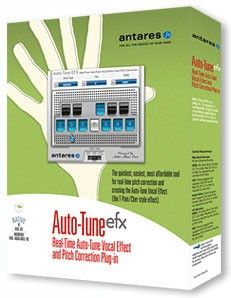
This means it includes both the Flex-Tune and Natural Vibrato parameters found in Pro. Moving on to Artist, we find a plug-in that’s almost identical to Auto-Tune Pro, albeit without the graph editor and the functions that rely on it. While this is much simpler to use than the traditional way of doing this sort of thing via Auto-Tune Pro’s graph view, it’s all a bit too rigid and limiting and so, outside of a few very specific use-cases, I struggle to see the point of Auto-Motion. When activated, the pattern determines the specific pitch that the processed audio will be re-tuned to, overriding Auto-Tune’s usual ‘nearest matching note’ re-tuning. This provides a set of 66 musical patterns – arpeggios, octaves, harmonies etc – that adapt to the current scale and key that the plug-in is using and which can be synchronised to your DAW or can ‘free wheel’ at a selected tempo. I’m less convinced of the usefulness of the Auto-Motion feature, however. Nonetheless, the Auto-EFX effects go a long way towards making up for the simplified nature of the plug-in and the X/Y pad parameter editing is both intuitive and automatable. But it would be nice to be able to select the modules you want directly, rather than having to trawl through presets looking for something that suits. There’s a good range of these patches to choose from, some created by Antares, and others created by established producers Jeff Rona, Mike Dean and Richard Levine and between them, these patches cater for all possible combinations of EFX module. Those modules are: Pitch and Throat, Duet, Vocode, Tube Amp, Mutate and Filter.ĭisappointingly, although you can freely turn each slot on and off, you can’t directly choose which module is assigned to which processing slot rather, you have to load one of the included Auto-EFX patches, as these are what define the module assignment.


The first of these is an integral multi-effects rack consisting of four processing slots that can have any one of six effect modules assigned to them.Įach module has two editable parameters, which are edited via an X/Y pad when a module is selected. This basic arrangement of Auto-Tune controls is as far as things go for the EFX+ edition, but it makes up for this simplification with the addition of Auto-EFX and Auto-Motion. Retune Speed determines the rate at which incoming audio is re-tuned, while Humanize controls the way in which sustained notes are handled, avoiding the situation where fast retuning can kill off any natural vibrato in those sustained notes.
#Auto tune efx 1 pro
The Retune Speed and Humanize controls found in Pro are also included in both Artist and EFX+ editions. You can also use the keyboard graphic – one octave in EFX+ and full-length in Artist – to further control the notes that Auto-Tune will re-tune to.

The plug-ins are also compatible with the companion Auto-Key plug-in (sold separately) that analyses audio to determine its key and scale, and then distributes this data to all Auto-Tune instances running in the session. The key and scale that Auto-Tune is working to can be selected from a couple of drop-downs at the top of the windows, although here EFX+ offers a far more limited choice of scales than Artist does.Ī low-latency option is available to both plug-ins, too, which is ideal for cue mixes in the studio and for live use on stage, albeit at the cost of increased system-resource usage.
#Auto tune efx 1 windows
Common featuresĪt the centre of the windows of both plug-ins there’s a circular meter that displays the note that Auto-Tune is currently outputting and indicates the amount of re-tuning that’s being applied. Antares has now wrapped this same technology into a new pair of plug-ins, Auto-Tune EFX+ and Auto-Tune Artist, which further simplify the user interface but that retain all of the Auto-Tune sound. The latest flagship version of the technology, Auto-Tune Pro, delivers that sound via a new, quick and easy interface, while retaining the classic graph view that allows for deeper pitch and time modifications. The reason for this is, of course, that Auto-Tune’s pitch-, time- and formant-warping algorithms impart a certain timbre and tone that can be rather pleasing and that lends itself perfectly to many genres of contemporary music.

Nowadays, Auto-Tune is often used even when the performer is more than capable of delivering an in-tune performance.


 0 kommentar(er)
0 kommentar(er)
